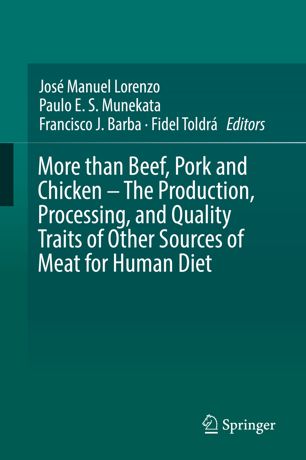

Most ebook files are in PDF format, so you can easily read them using various software such as Foxit Reader or directly on the Google Chrome browser.
Some ebook files are released by publishers in other formats such as .awz, .mobi, .epub, .fb2, etc. You may need to install specific software to read these formats on mobile/PC, such as Calibre.
Please read the tutorial at this link: https://ebookbell.com/faq
We offer FREE conversion to the popular formats you request; however, this may take some time. Therefore, right after payment, please email us, and we will try to provide the service as quickly as possible.
For some exceptional file formats or broken links (if any), please refrain from opening any disputes. Instead, email us first, and we will try to assist within a maximum of 6 hours.
EbookBell Team

4.3
88 reviewsThis comprehensive work explores the demand, supply and variable consumer attitude toward a wide variety of unconventional and exotic animal species that are consumed in different parts of the world. Individual chapters focus on the consumption of horse meat, camel, buffalo, sheep, rabbit, wild boar, deer, goose, pheasant and exotic meats such as alligator, snake, frog and turtle. For each type of animal species, the carcass characteristics, physico-chemical properties and nutritional value of the meat are extensively outlined. The consumer preference, behavior and perception of each type of meat are also covered, with focus on important factors from sensory properties to psychological and marketing aspects. In promoting a better understanding of the complexities involved in consumer decision making, this book aims to improve the competitiveness of the meat industry through effective informational strategies that can increase consumer acceptance of more convenient, healthy and environmentally friendly meat choices.
More than Beef, Pork and Chicken – The Production, Processing, and Quality Traits of Other Sources of Meat for Human Diet also focuses on the important role meat plays in the human diet and the evolution of the species. Beneficial factors such as protein, B complex vitamins, zinc, selenium and phosphorus are detailed. Negative factors are discussed as well, with issues such as fat and fatty acid content being addressed for each type of meat presented. In exploring the full range of nutritional benefits, consumer acceptance and carcass characteristics in a large quantity of different types of animal meats from all over the world, this book offers incredible value to researchers looking for a single source on unconventional meat processing.